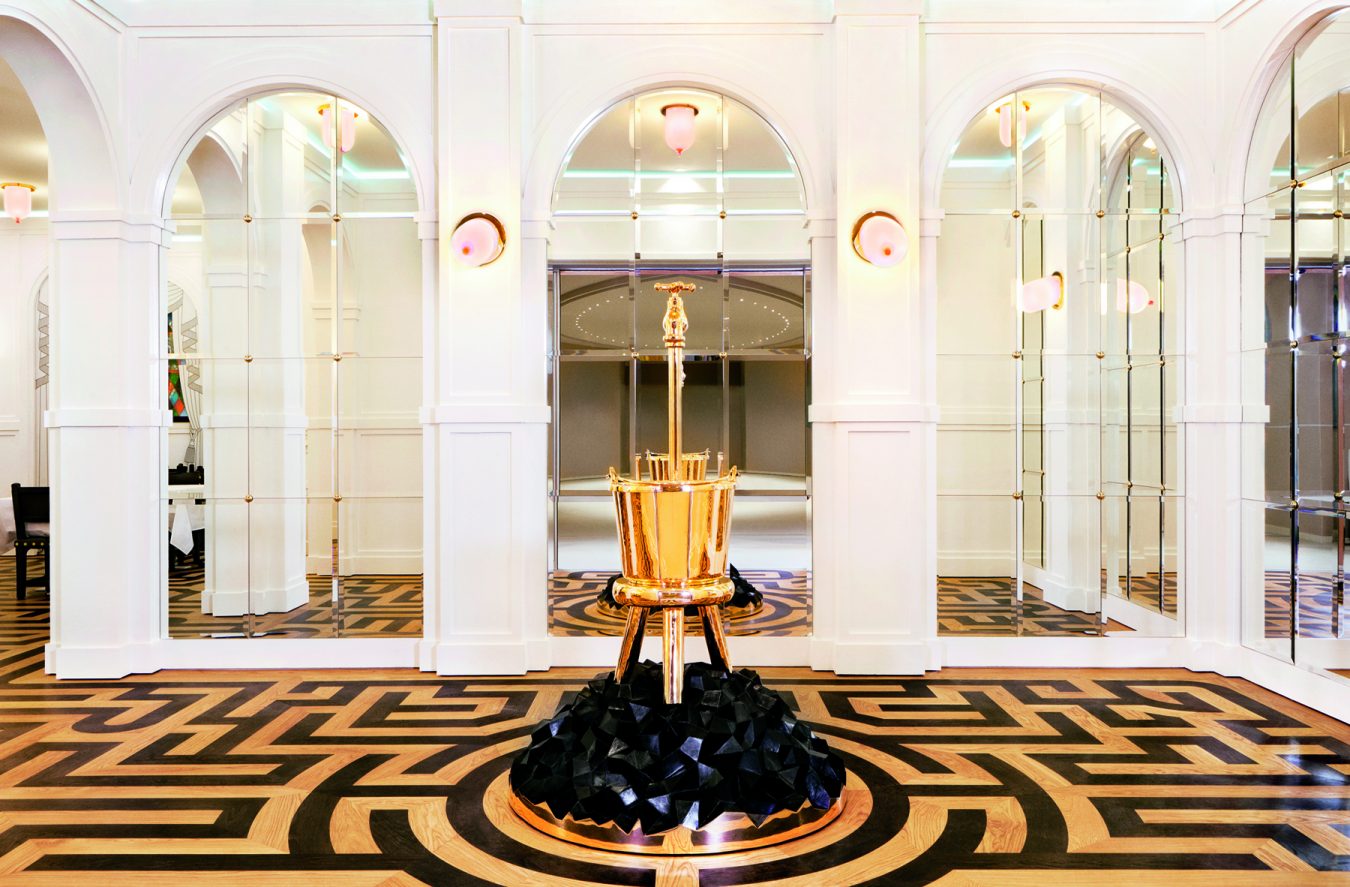While other art museums may go for grandeur, the Groninger Museum in the Netherlands plays on joy.
It’s impossible not to grin at the first sight of this brilliantly colourful, post-modernist gem. All angles, patterns, and colours, it seems to tumble along its small island home in a canal in Groningen, the largest city in the country’s north and about two hours by train from Amsterdam.
Often described as futuristic-looking, the museum’s exterior will be familiar to fans of colourful 1980s Memphis design; it is a showplace of form, colour, and style, and was rightfully included in the book 1001 Buildings You Must See Before You Die. Easily toured in a half day, the museum gets about 200,000 visitors a year, and only about one in 10 of them are from North America.
The visionary behind the complex, Italian designer and architect Alessandro Mendini, makes his mark with a large central golden tower and a waterline-hugging pavilion seemingly wrapped in one of his vivid Pointillist-inspired patterns. The museum entrance is fancifully anchored by red neon above and Mendini’s stunning, curving mosaic staircase that further echoes the patterns in his colourful Proust chair. Mendini tapped a dream team of modern designers for the museum’s buildings, including Philippe Starck, Michele de Lucchi, and collective Coop Himmelb(l)au.
Not everybody loved the museum, anchored by Mendini’s golden tower, when it opened in 1994. Yet the vibe is bright, occasionally playful, and surprisingly cheerful—a contrast to the typically serious world of art museums. “It’s very colourful and you get very happy,” explains docent Marie Wollerich, when asked what sets this museum apart in a country known for galleries hung with Rembrandt, Van Gogh, and Vermeer. Art is all encompassing here; inside and out, and from the ground up. If a passing barge means the lift bridge to the museum island is temporarily out of commission, amuse yourself by looking at the underside, covered with classic Delft blue tile-inspired stickers by Belgian artist Wim Delvoye.
At one end of the complex, notable for its rusting steel-plate skin, is Coop Himmelb(l)au’s riotously chaotic East Pavilion, home of temporary exhibits. Dutch artist Gabriel Lester’s hypnotic video installation Aeon Trilogy is an example of the work shown here.
The Groninger’s permanent collection ranges from historic to modern, including Jeff Koons’s mirrored Christ and the Lamb, while rotating exhibitions range from the historic, with an exhibit dedicated to paintings and objects from Groningen’s 17th- and 18th-century city palaces, to the first major solo exhibit from influential 39-year-old Dutch designer Maarten Baas. Anyone who has travelled through Amsterdam’s Schiphol Airport, or entered the city’s famed Rijksmuseum, knows Baas’s witty take on grandfather clocks. The multimedia installations feature videos of people inside the clock face, erasing and drawing the hands to mark real time. Baas leaves his mark on the Mendini Restaurant off the Groninger lobby with his amusingly lumpy-legged Clay Furniture chairs. And a 2010 renovation to the museum introduced an Info Centre by Spaniard Jaime Hayon that seems to float in the canal.
Although a day trip to the Groninger Museum is doable from Amsterdam, the city of Groningen is worth a weekend visit. As a university town, it has a youthful vibe, car-free centre, excellent restaurants, plenty of history, public art installations, and delightful architecture (the Groninger Museum included) to discover.
More from our Arts section.

















